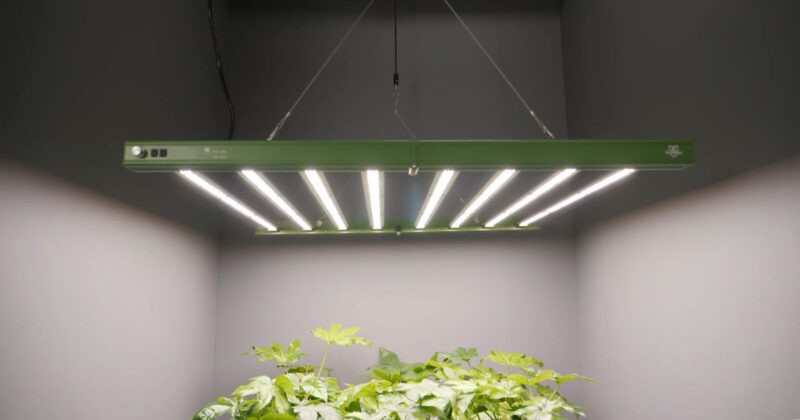LED grow lighting has emerged as a giant advancement in how we technique indoor farming. Appreciated for low energy intake, these lighting fixtures provide an ahead-thinking answer to standard indoor light structures, that have been scrutinized for high power use and environmental impact.
The technology behind LED grow lights is tailored to strive for minimal waste of electricity, directly impacting both operational costs and environmental consequences. If you want to take a look at some options you can find at the market, be sure to pay a visit to Spider Farmer.
Most notably, these lights convert a much higher percentage of energy into light rather than heat, which is beneficial for managing the climates within growth environments without incurring additional energy expenses.
Let’s talk about them in greater detail.
Key Takeaways:
- LED grow lights are acclaimed for their low energy usage and role in sustainable agriculture.
- These lights effectively convert energy into light, benefiting both costs and controlling growth environments.
- Balancing technology, economic impact, and ecological considerations is crucial in today’s farming practices.
The Technology Behind LED Grow Lights
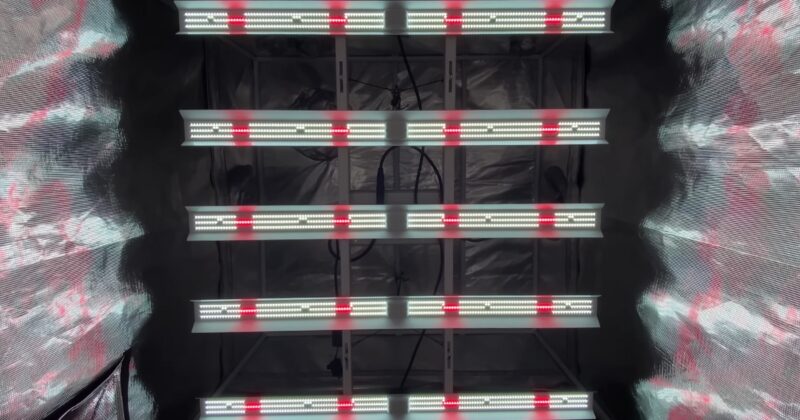
In this section, you will discover how LED grow lights harness state-of-the-art technology to efficiently support plant growth and how this compares to traditional lighting systems.
Photosynthetically Active Radiation (PAR)
PAR is the range of light within the visible light spectrum that plants use for photosynthesis. Unlike the full spectrum of sunlight, LEDs hone in on the specific wavelengths pertinent to plant growth. This ensures that the light emitted targets the chlorophyll absorption peaks more effectively.
LED Grow Lights vs. Traditional Lighting Systems
When comparing LED grow lights with traditional systems like high-pressure sodium (HPS), fluorescent lights, and incandescent bulbs, the advantage becomes clear. They concentrate light downwards onto the plants, which minimizes waste.
On the contrary, traditional ones require additional accessories, such as hoods and reflectors, to manage dispersal, which is inherently less energy-efficient.
Spectrums and Efficiency
Plants benefit differently from various parts of the spectrum. LED can be engineered to emit precise light spectrums. For instance, blue supports robust leaf growth, while red is most efficient for flowering and fruit production. This precision in spectral output allows for maximization of photosynthesis and subsequently, plant health and yield.
Advancements in LED Technology
LED technology has significantly advanced, leading to innovations in sustainable agriculture. Newer models of LEDs can provide a balance of cool and warm light, embodying a precise light spectrum which is essential for different stages of plant growth.
This tailored lighting is not only more energy-efficient but also contributes to a lower environmental impact when compared to HPS and fluorescent systems.
Environmental Advantages
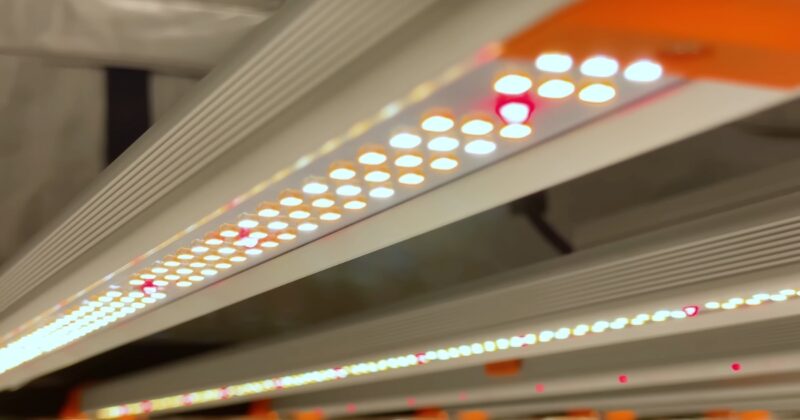 When selecting lighting for farming, you have the power to make a positive impact on the environment. LED grow lights offer a suite of environmental advantages that help you reduce the carbon footprint of your agricultural practices.
When selecting lighting for farming, you have the power to make a positive impact on the environment. LED grow lights offer a suite of environmental advantages that help you reduce the carbon footprint of your agricultural practices.
Reducing the Carbon Footprint with LEDs
Their decreased energy consumption means less fossil gas is burned to generate electricity. By utilizing LED grow lighting, you are actively contributing to less carbon dioxide (CO2) being launched into the surroundings, which is a sizable step closer to sustainability in agriculture.
- Up to 75% financial savings in comparison with incandescent lighting fixtures.
- Decreasing the environmental burden of strength manufacturing.
Minimizing Heat Emission and Energy Consumption
LED grow lighting fixtures are designed to be power-green, with the maximum strength used transformed immediately to light rather than heat. This key characteristic not simplest helps in decreasing your farm’s electricity wastage but also minimizes the want for extra cooling systems, main to in addition strength savings.
- Over 80% of the energy used is converted to light.
- It leads to additional energy conservation.
Longevity and Waste Reduction
The prolonged lifespan and durability of LED mean longer durations between replacements, lowering waste technology. Unlike conventional lighting fixtures alternatives, the lengthy-term utilization of LEDs decreases the quantity of waste that ends up in landfills, making it an extra sustainable desire.
- LED lights can last up to 50,000 hours.
- Less frequent need for maintenance and replacement.
Eco-Friendly Materials and Manufacturing
The materials used in LED lighting are often safer and more recyclable than those in conventional systems. With eco-friendly manufacturing processes, the environmental impact of production is reduced. By choosing LEDs, you support the use of more sustainable materials and responsible manufacturing practices.
- They contain fewer hazardous materials than traditional bulbs.
- Reduced environmental impact from the production process.
Grow Lights in Sustainable Farming Practices
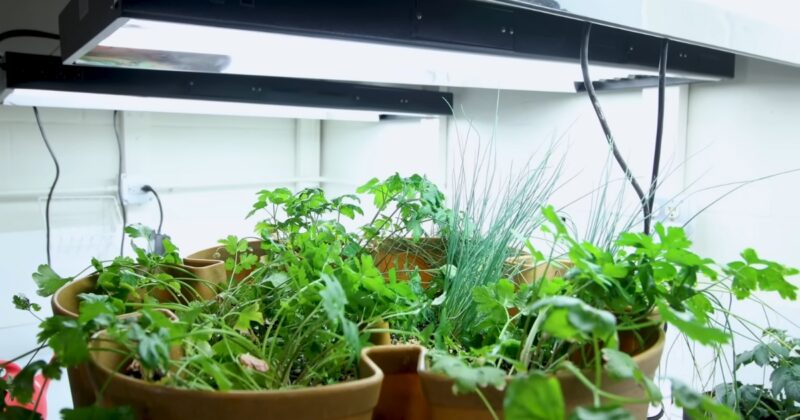
With a critical focus on sustainability, LED grow lights have emerged as a promising solution to drive forward sustainable farming practices in controlled environments. They not only enhance plant growth but also contribute significantly to energy savings and water conservation.
Optimizing Plant Growth and Crop Yields
When you use LED grow lights, you are investing in technology that has been engineered to optimize wavelengths for enhanced plant growth and increased crop yields.
LEDs have the distinct advantage of emitting light in the specific spectra that plants require for photosynthesis. Studies indicate that strategically placed LEDs could bolster crop growth, mainly because they can be tuned to the specific light frequencies that plants need most.
- They convert electricity into light effectively, meaning more light for plants per watt of electricity consumed.
- They emit less heat compared to traditional lights, reducing the risk of plant damage and allowing lights to be placed closer to the plant canopy for improved light penetration.
Enhancing Indoor Farming and Food Security
LED grow lights serve as a cornerstone in indoor and vertical farming environments by enabling year-round cultivation, thereby bolstering food security. By providing consistent, reliable light, you can produce a steady supply of crops regardless of external weather conditions, which is critical in feeding a growing population and reducing light pollution from greenhouses.
- The use of LEDs in vertically stacked layers maximizes space and can lead to higher per-acre yields.
- Some LED lights can potentially reduce the reliance on pesticides, which in turn reduces environmental impact and could lead to healthier produce for consumers.
Contributing to Water Conservation
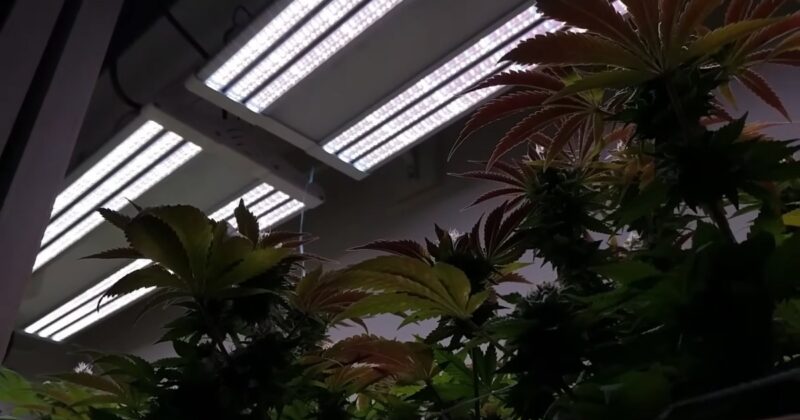
Add these to your farming practices can play a significant role in water conservation strategies. Since these lights contribute to a controlled environment, you have more precise control over your plants’ water needs.
- Less heat emission from LEDs can reduce water evaporation, minimizing water usage.
- Hydroponic systems paired with LED lighting often allow for the recycling of water and nutrients, leading to significant reductions in water consumption without sacrificing plant health or yield.
Cost Analysis and Economic Impact
When considering LED grow lights for your farming needs, it’s crucial to evaluate the initial investment against long-term savings, understand the recurring operating and maintenance expenses, and recognize how these factors influence both your bottom line and the broader market.
Initial Costs vs. Long-Term Savings
Your premature fee for investing in LED grow lighting is normally higher while compared to traditional light systems like incandescent or fluorescent bulbs. However, the lifespan of lighting ways exceeds that of conventional options, often lasting up to 50,000 hours.
You will discover that those lighting can result in sizable electricity financial savings, as they devour significantly much less energy and generate much less heat, lowering warmth pressure on flora and probably reducing cooling charges.
- LEDs use approximately 50% less energy than conventional lighting.
- With an extended lifespan, the frequency of replacements is some distance less for LEDs, contributing to lengthy-time period savings.
Operating and Maintenance Costs
The operating costs of LED grow lights are considerably lower due to their higher energy efficiency and lower electricity consumption.
You’ll also save on maintenance costs since LEDs require less frequent replacements and are more durable compared to traditional lighting options. This translates into less time and management resources spent on maintenance.
They require minimal maintenance compared to their traditional counterparts, which regularly incur expenses due to burnout or inefficient performance.
Impact on Farms and Consumers
For farms, transitioning to LED grow lights can improve productivity by providing optimal light spectra for plant growth without excess heat, which can reduce plant vigor.
Consumers benefit from the reduction in operating and transportation costs, as a more energy-efficient and productive farm can offer more competitive pricing and potentially a smaller carbon footprint due to decreased energy use across the board.
Energy savings and reduced heat stress on plants can lead to higher yields and quality, positively impacting farm revenue.
FAQs
Are LED grow lights cheaper to run?
LED grow lights are more energy-efficient, with the usage of up to 30-50% less power than conventional light systems like High-Pressure Sodium (HPS) and Metal Halide (MH) lamps. This performance interprets to decrease operational costs over the years notwithstanding higher initial buy fees.
Is 40 kWh per day a lot?
Whether 40 kWh per day is a lot depends upon the context of use. For a residential household, this could be considered high utilization. However, in an industrial grow operation with a couple of excessive-intensity grow lighting fixtures, forty kWh is probably typical or even at the lower aspect depending on the scale of the operation.
How much electricity does 600W use?
Using a 600W mild for one hour will consume 0.6 kilowatt-hours (kWh) of electricity. To calculate your usage over the years, multiply this using the full hours of operation. For example, jogging a 600W light for 10 hours might use 6 kWh.
How many kWh does a 1000-watt light use?
A 1000-watt (1 kW) light uses 1 kilowatt-hour of power in line with the hour of operation. Therefore, if you run one thousand-watt light for 12 hours a day, it might eat 12 kWh day by day.
Summary
LED grow lights constitute a significant advancement for your technique in indoor gardening and hydroponics. They offer energy performance and sustainability, attributes that immediately contribute to lowering your environmental footprint.
You will not only align with a sustainable model of cultivation but also embrace a price-effective answer over time due to their lengthy lifespan and lower power necessities.
Related Posts:
- How to Reduce Your Pool's Environmental Impact - 2024 Guide
- 10 Climate Change Movies To Watch in 2024: Lights,…
- How Big Do Beavers Grow? Exploring the Growing Giants
- 10 Best Books on Climate Change in 2024 - In-Depth…
- Creating an Environmental Blog: 9 Writing Tips for…
- Casino Sustainability: How the Industry is Embracing…


